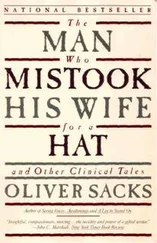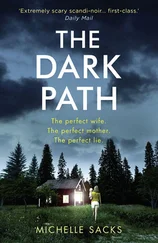What was going on in her brain? she asked me. Why, above all, was she getting these odd and sometimes nightmarish hallucinations of grotesque faces? From what depths did they come? Surely it was not normal to imagine such things. Was she becoming psychotic, going mad?
I told her that the impairment of vision on one side following her surgery had probably led to heightened activity in parts of the brain higher up in the visual pathway, in the temporal lobes, where figures and faces are recognized, and perhaps in the parietal lobes, too; and that this heightened, at times uncontrolled, activity was causing her complex hallucinations and also the extraordinary persistence of vision, the palinopsia, she was experiencing. The particular hallucinations which so horrified her — of deformed and dismembered faces or faces with exaggerated, monstrous eyes or teeth — were, in fact, typical of abnormal activity in an area of the temporal lobes called the superior temporal sulcus. They were neurological faces, not psychotic ones.
Ellen wrote to me periodically with updates, and six years after our initial visit, she wrote: “I would not say that I am entirely recovered from my visual problems; more that I am living more harmoniously with them. My hallucinations are much smaller, but they are still there. Mostly I see the colorful orb all the time, but it no longer distracts me as much.”
She still has some difficulty with reading, especially when she is tired. When she read a book recently, she said,
I lost a word or two in my color spot (I had a black/blind spot after surgery, but it turned into a colored spot a few weeks later, and I still have it. My hallucinations are around that spot.) … As I type now, after a very long day at work, there is a very faint black-and-white Mickey Mouse from the thirties just off center to the left. He’s transparent, so I’m able to see my computer screen as I type. I do, however, make many mistakes typing, as I can’t always see the key I need.
But Ellen’s blind spot has not prevented her from pursuing graduate courses and even marathon running, as she reported with characteristic good humor:
I ran the New York City marathon in November and tripped on this metal ring, a piece of garbage, on the Verrazano Bridge a little before the second mile. It was on my left side, and I didn’t even see it, as I was only looking to my right. I got back up and finished, although I did break a small bone in my hand — which, I think, makes for a wonderful running injury story. In the orthopedics waiting room when I was there, everyone else who had finished the marathon had knee or hamstring injuries.
While Ellen’s complex hallucinations started several weeks after her operation, similar “release” hallucinations may appear almost immediately with sudden damage to the occipital cortex. This was the case with Marlene H., a woman in her fifties who came to see me in 1989. She told me that she had awoken one Friday morning in December 1988 with a headache and visual symptoms. She had had migraines for years, and at first she took this as just another visual migraine. But the visual symptoms were different this time: she saw “flashing lights all over … shimmering lights … arcs of lightning … like a Frankenstein thing,” and these did not go away in a few minutes, like her usual migraine zigzags, but continued all through the weekend. Then, on Sunday evening, the visual disturbances took on a more complex character. In the upper part of the visual field, to the right, she saw a writhing form “like a Monarch caterpillar, black and yellow, its cilia glistening,” along with “incandescent yellow lights, like a Broadway show, going up and down, on and off, nonstop.” Though her doctor had reassured her that this was just “an atypical migraine,” things went from bad to worse. On Wednesday, “the bathtub seemed to be crawling with ants … there were cobwebs covering the walls and ceiling … people seemed to have lattices on their faces.” Two days later she started to experience gross perceptual disturbances: “My husband’s legs looked really short, distorted, like someone in a trick mirror. It was funny.” But it was less funny, and rather frightening, in the market that afternoon: “Everyone looked ugly, parts of their faces were gone, and eyes — there seemed a blackness in their eyes — everyone looked grotesque.” Cars seemed to appear suddenly to the right. Testing her visual fields, waggling her fingers to either side, Marlene found that she could not see them on the right until they crossed the mid-line; she had lost all vision to the right side.
It was only at this point, days after her initial symptoms, that she was finally investigated medically. A CAT scan of her brain revealed a large hemorrhage in the left occipital lobe. There was little to be done therapeutically at this stage; one could only hope that there would be some resolution of her symptoms, some healing or adaptation with time.
After some weeks, the hallucinations and perceptual distortions, which had been largely confined to the right side, did start to die down, but Marlene was left with a variety of visual deficits. She could see, at least to one side, but was bewildered by what she saw: “I would have preferred to be blind,” she told me, “instead of not being able to make sense of what I saw.… I had to go slowly, deliberately, to put things together. I would see my sofa, a chair — but I couldn’t put it together. It did not add up, at first, to a ‘scene.’ … I was a very fast reader before. Now I was slow. The letters looked different.”
“When she looks at her watch,” her husband interpolated, “at first she can’t process it.”
Besides these problems of visual agnosia and visual alexia, Marlene was experiencing a sort of runaway visual imagery, outside her control. At one point, she saw a woman wearing a red dress on the street. Then, she said, “I closed my eyes. This woman, almost puppetlike, was moving around, took on a life of her own.… I realize that I had been ‘taken over’ by the image.”
I kept in touch with Marlene at intervals and saw her most recently in 2008, twenty years after her stroke. She no longer had hallucinations, perceptual distortions, or runaway visual imagery. She was still hemianopic, but her remaining vision was good enough for her to travel independently and to work (which involved reading and writing, albeit at her own slow pace).
While Marlene experienced protracted perceptual changes as well as hallucinations after a massive occipital lobe hemorrhage, even a “little” occipital lobe stroke can evoke striking, though transient, visual hallucinations. Such was the case with a bright, deeply religious old lady whose hallucinations appeared, “evolved,” then disappeared, all within the space of a few days in July of 2008. I got a call from one of the nurses in a nursing home where I work — we had worked together for many years, and she knew that I was especially interested in visual problems. She asked whether she could bring her great-aunt Dot to see me, and between them, they reconstructed the story. Aunt Dot told me that her vision had seemed “blurry” on July 21, and the following day, “it was like looking through a kaleidoscope … all this rotating color going through,” with sudden “lightning streaks” to the left. She went to her doctor, who, finding that she had a hemianopia to the left, sent her to an emergency room. There it was found that she had atrial fibrillation, and a CAT scan and MRI showed a small area of damage in the right occipital lobe, probably the result of a blood clot dislodged by the fibrillation.
The following day, Aunt Dot saw “octagons with red centers … moving past me like a film strip, and the moving octagons changed into hexagonal snowflakes.” On July 24, she saw “an American flag, outstretched, as if flying.”
Читать дальше












